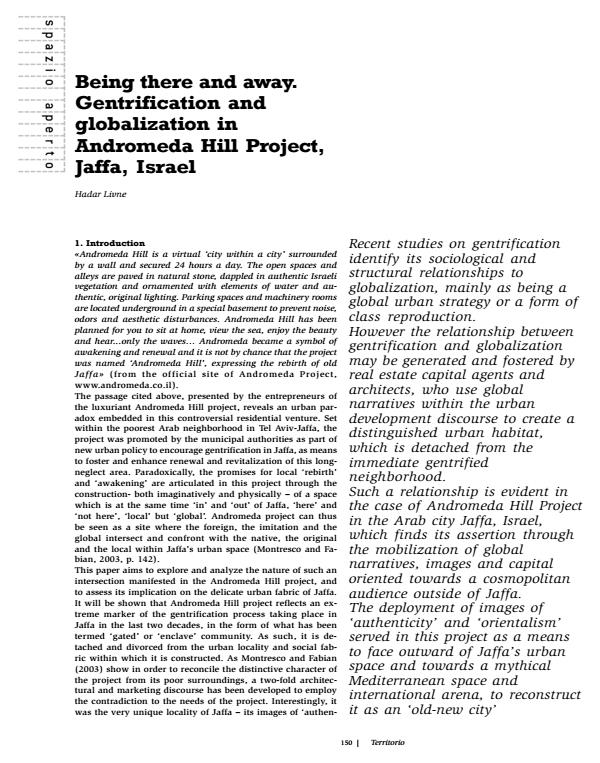Being there and away. Gentrification and globalization in Andromeda Hill Project, Jaffa, Israel
Journal title TERRITORIO
Author/s Hadar Livne
Publishing Year 2009 Issue 2008/47
Language English Pages 8 P. 150-157 File size 536 KB
DOI 10.3280/TR2008-047017
DOI is like a bar code for intellectual property: to have more infomation
click here
Below, you can see the article first page
If you want to buy this article in PDF format, you can do it, following the instructions to buy download credits

FrancoAngeli is member of Publishers International Linking Association, Inc (PILA), a not-for-profit association which run the CrossRef service enabling links to and from online scholarly content.
<em>Gentrification and globalization in Andromeda Hill Project, Jaffa, Istrael</em> - Recent studies on gentrification identify its sociological and structural relationships to globalization, mainly as being a global urban strategy or a form of class reproduction. However the relationship between gentrification and globalization may be generated and fostered by real estate capital agents and architects, who use global narratives within the urban development discourse to create a distinguished urban habitat, which is detached from the immediate gentrified neighborhood. Such a relationship is evident in the case of Andromeda Hill Project in the Arab city Jaffa, Israel, which finds its assertion through the mobilization of global narratives, images and capital oriented towards a cosmopolitan audience outside of Jaffa. The deployment of images of ‘authenticity’ and ‘orientalism’ served in this project as a means to face outward of Jaffa’s urban space and towards a mythical Mediterranean space and international arena, to reconstruct it as an ‘old-new city’. This process results in the devalorization and erasure of the local urban space and its longneglected Arab population, and consequently in the creation of alienated, exclusive, Jewish gated community which ignores its social and physical surroundings.
Hadar Livne, Being there and away. Gentrification and globalization in Andromeda Hill Project, Jaffa, Israel in "TERRITORIO" 47/2008, pp 150-157, DOI: 10.3280/TR2008-047017